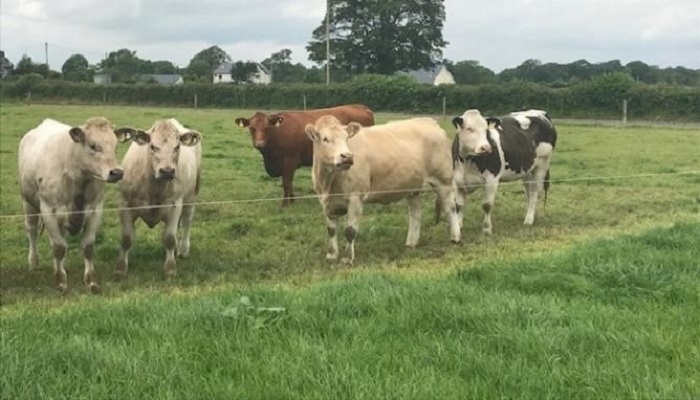19 July 2023
6 key steps to deal with wet conditions on beef farms

The early summer months brought near drought conditions for much of the country. Since mid-June, however, there has been a significant amount of rain – especially in some southern, northern and western areas. Teagasc Drystock Specialist Alan Dillon has some advice if your farm is impacted.
Given the volumes of rain falling in certain areas of the south and west – especially since June 9th – farmers calling for rain in some parts in late May could well be wishing they hadn’t been so eager.
While farmers on drier, free-draining soils and those in eastern counties are still managing relatively ok, those on soils of a heavier nature are starting to see significant levels of poaching occurring and are unable to harvest second-cut silage without tracking fields. If a farmer finds themselves in this situation, where land is becoming saturated and no sign of a dry spell coming to relieve the situation, a number of options must be looked at.
1). Move stock on quicker
The ideal post-grazing height is at around 4cm. However, if stock are beginning to poach land following significant rainfall then they may need to be moved on quicker to avoid hitting regrowth. There is no harm in this, as grazing out to lower levels can happen in the next rotation once weather dries up.
2). Weaning autumn/winter calving cows
Housing remaining autumn/winter calving cows and calves and weaning calves indoors may be a simpler option, as you have more control over stock and can manage the weaning process with less stress on man and beast. Meal should be introduced to calves for a number of weeks prior to weaning.
When weaning calves, ensure that all conditions for suckler schemes are adhered to. Once weaned, calves can be turned back out to grass, while cows can remain indoors until weather improves on moderate-quality forage.
If the situation persists with high rainfall, spring-calving cows could be housed for a period with heavier calves weaned. Again farmers must ensure they meet all scheme requirements and also monitor calves for pneumonia outbreaks if housed in wet, warm conditions.
3). House forward stores for finishing
Steers approaching 500-550kg or heifers approaching 400-500kg, depending on breed, could be housed also if conditions become wet underfoot. Thrive levels will fall back on grass at this time of year naturally anyway as dry matter tends to drop.
With incessant rainfall unsettling heavy stock and dry matter intakes dropping, housing these cattle and starting them on a finishing diet of silage and 4-5kg of a finishing ration would be beneficial. It will give higher levels of thrive, increase fat cover faster and lead to a quicker kill in the winter. If these cattle remain at grass, meal will be needed in any case to achieve a satisfactory fat cover.
Bulls intended for killing by year end or early next year should be housed already and have been started on their 120-150 day finishing diet. Housing these heavier cattle will leave more grass available for lighter cattle, who can utilise grass and do less ground damage.
4). Finishing 30-month steers and heifers
Many farmers have steers and heifers at grass approaching 30 months currently. Feeding these on with 4-5kg/head/day of a finishing ration will be beneficial to move them for slaughter faster.
Again, like the store cattle previously mentioned, thrive at grass will drop from now on with wet weather exasperating the situation and meal fed now to speed up the process of fattening these cattle will be well spent. Farmers need to start watching age of these stock also, as cattle born in early February 2021 will be hitting 30 months soon. The penalty for these 30-36 month stock is the Quality Assurance payment reducing from 20c/kg down to 8c/kg.
5). Meal feeding dairy-beef calves
Meal should be in the diet of dairy-bred calves again, especially later-born calves at grass. With dry matter dropping in grass down to 12 or 14%, they may not have high enough intakes to meet nutritional requirements, therefore even 1kg/head/day of a 16% protein ration or pellet would be beneficial.
6). Second-cut silage
Harvesting second-cut silage is becoming tricky, especially on heavier fields with some cases of water lodging on crops. Farmers need to monitor the situation closely with these crops; if weather doesn’t improve significantly soon, quality will deteriorate and it will be more costly to feed with extra supplementation required next winter.
These fields should be walked regularly and – if conditions allow – the crops should be harvested immediately. The crops should be tedded after mowing and either baled or pitted before more rain arrives. These crops will be deteriorating in quality due to the length of time they are growing and also due to water lodging at the base of the sward.
Also read: Future Beef Farmer Trever Boland’s 10 point autumn calving plan
Also read: Dosing advice to slow the build-up of resistance
Also read: SCEP participants – don’t forget about the Bord Bia requirement
